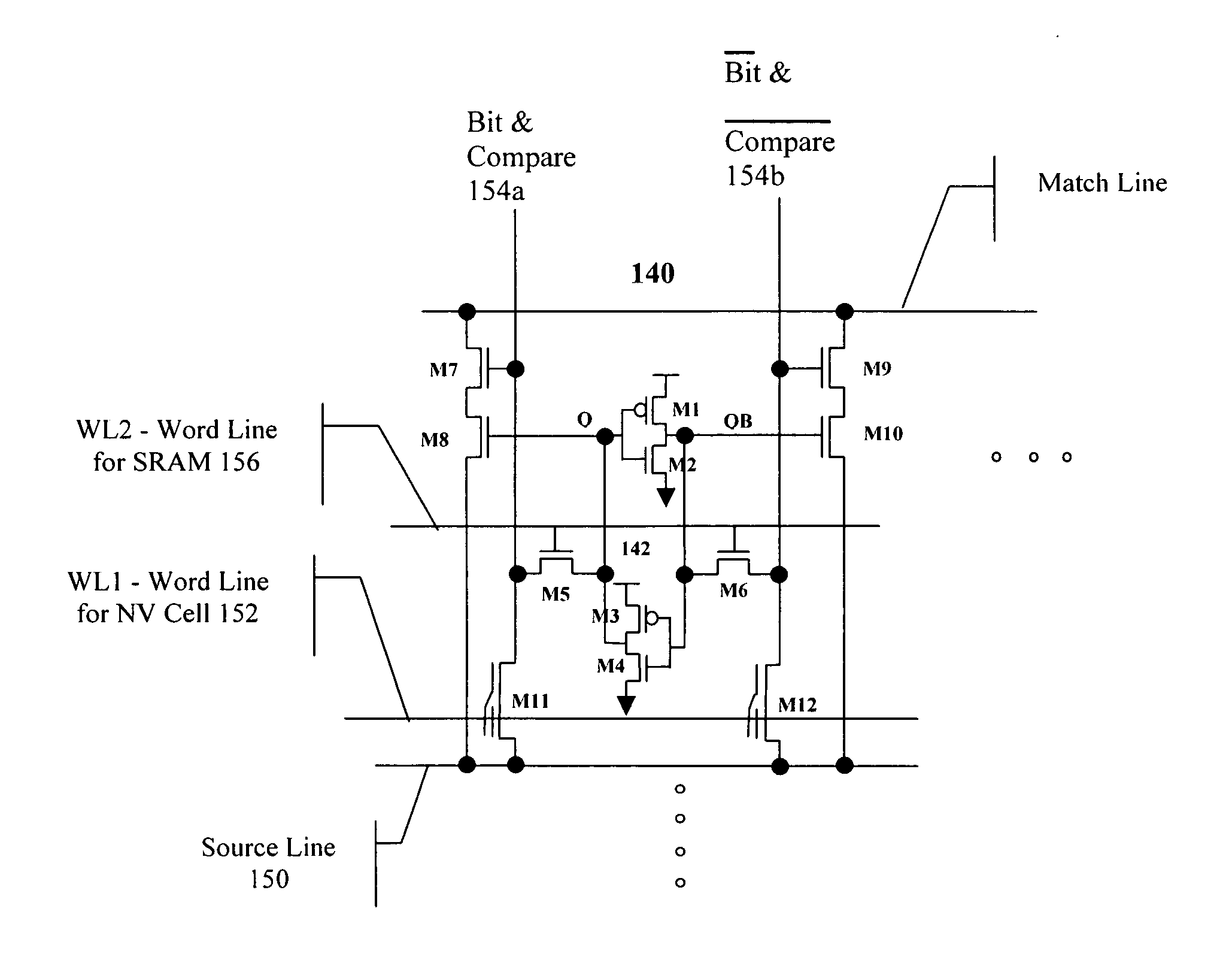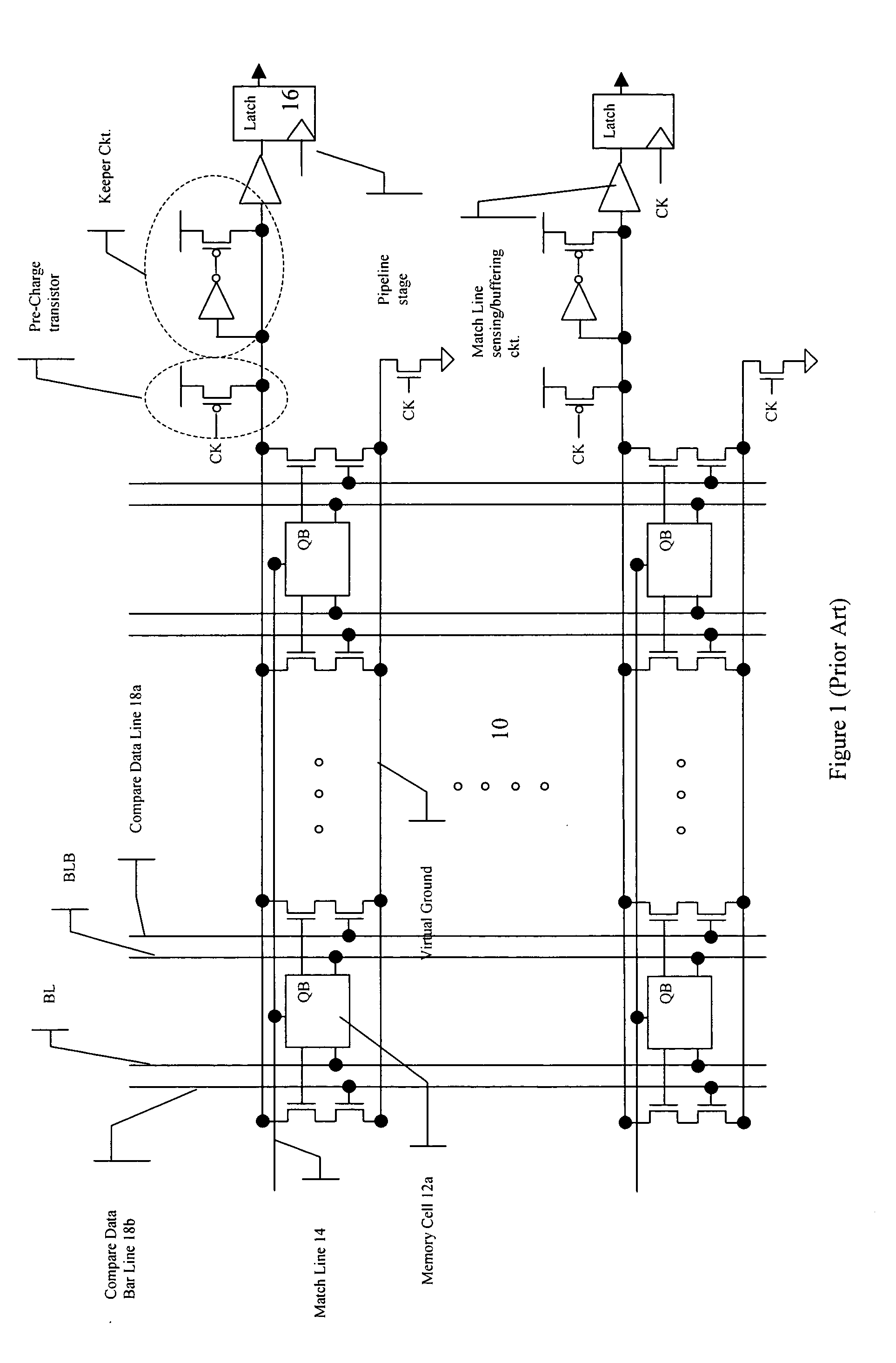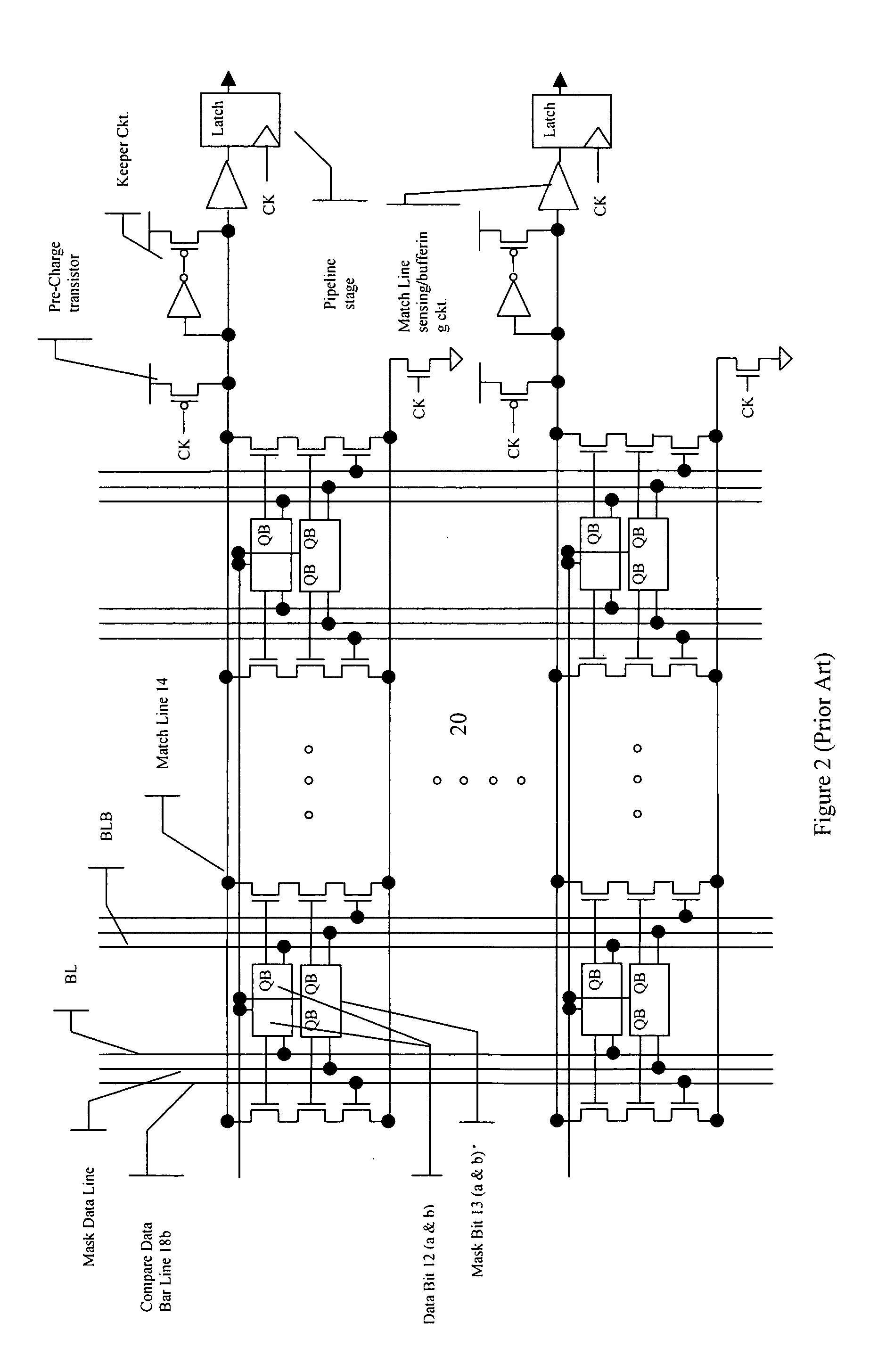High-speed and low-power differential non-volatile content addressable memory cell and array
a non-volatile content, memory cell technology, applied in static storage, digital storage, instruments, etc., can solve the problems of increasing power consumption problems, imposing limitations on array architecture, and further power requirements
- Summary
- Abstract
- Description
- Claims
- Application Information
AI Technical Summary
Benefits of technology
Problems solved by technology
Method used
Image
Examples
first embodiment
[0018] Referring to FIG. 4, there is shown a differential non-volatile content addressable memory cell 40 of the present invention. The cell 40 comprises a pair of non-volatile storage elements 42a and 42b. Each non-volatile storage element 42 has three terminals: a first terminal labeled “A,” a second terminal labeled “B,” and a third terminal labeled “C.” Each of the storage elements 42 is capable of being in one of two non-volatile states: a first state in which a first current flows between the first terminal A and the third terminal C and a second state in which a second current, less than the first current, flows between the first terminal A and the third terminal C. The second terminal B is a control terminal that controls the flow of current between the first terminal A and the third terminal C. The cell 40 also comprises a pair of differential data lines 18 labeled as “compare 18a” and “compare bar 18b.” Each of the data lines 18 is connected to the second terminal B of one...
second embodiment
[0030] Referring to FIG. 5, there is shown an improved differential non-volatile content addressable memory cell 50. The memory cell 50 comprises a pair of non-volatile storage elements 42a and 42b, each of which can be of the embodiment shown in FIGS. 6A-6J. As previously discussed, each of the non-volatile storage elements 42 comprises three terminals: a first terminal A, a third terminal C, with a second terminal B controlling the conduction of current between terminal A and terminal C. The first terminal A of the two storage elements 42a and 42b are connected to the match line 14. The match line 14 is connected through a load 45 to Vcc. The terminals B of each of the storage elements 42a and 42b are connected to the compare line 18a and compare bar lines 18b, respectively. Finally, the terminal C of the two storage elements 42a and 42b are connected together and in common to a control line T3. During operation, the voltage supply on the control line T3 is at a second voltage whi...
third embodiment
[0032] Referring to FIG. 8 there is shown a circuit diagram of a memory cell 140 of the present invention. The memory cell 140 shown in FIG. 8 comprises a volatile memory cell 142, for storing Q and Q(Bar) of the data. The transistors M1, M2, M3 and M4 form the volatile memory cell 142. The cell 140 also comprises two non-volatile single transistor cells M11 and M12, for storing Q and Q(Bar) of the data respectively. Although single transistor memory cell of the type shown in FIG. 6C (or 6D) is shown as being used for the memory cell M11 or M12, other types of non-volatile memory transistors may also be used. A source line 150 connects to the first (source or drain) region of the transistors M11 and M12. A first word line 152 connects to the gates of the transistors M11 and M12. A bit / compare line 154a connects to the second (drain or source) region of the transistor M11; a bit(bar) / compare(bar) line 154b connects to the second (drain or source) region of the transistor M12. Transis...
PUM
 Login to View More
Login to View More Abstract
Description
Claims
Application Information
 Login to View More
Login to View More - R&D
- Intellectual Property
- Life Sciences
- Materials
- Tech Scout
- Unparalleled Data Quality
- Higher Quality Content
- 60% Fewer Hallucinations
Browse by: Latest US Patents, China's latest patents, Technical Efficacy Thesaurus, Application Domain, Technology Topic, Popular Technical Reports.
© 2025 PatSnap. All rights reserved.Legal|Privacy policy|Modern Slavery Act Transparency Statement|Sitemap|About US| Contact US: help@patsnap.com



